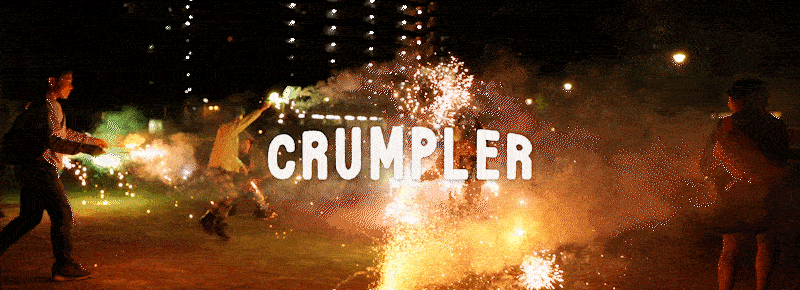
*TW: This article makes mention of sexual assault, violence against women and domestic violence. Proceed with caution.
Sexual assault support lines:
- 1800 Respect National Helpline: 1800 737 732
- Men’s Referral Service: 1300 766 491
- Lifeline (24-hour crisis line): 131 114
- Victims of Crime Helpline: 1800 819 817
- Full Stop Australia: 1800 385 578
This has been a tough month for women everywhere. The month started with a tragedy that shook the nation, after six victims were stabbed to death at Sydney’s Westfield Bondi Junction shopping center. Five of the six victims killed were women; NSW Police Commissioner Karen Webb said it was “obvious” that the attacker had intentionally focused on women and avoided men during the attack.
Then came a media whirlwind as Bruce Lehrmann was found on the balance of probabilities to have raped Brittany Higgins in Parliament House back in 2019, and subsequently lost his defamation case against Network 10 and journalist Lisa Wilkinson. Whilst this seemed like a small win after Lehrmann escaped criminal prosecution in 2022, it was announced today that Lehrmann may appeal this civil decision at the Federal Court.
Then, the following week brought news of the infamous Harvey Weinstein sex crime convictions being overturned by the New York appeals court. The Court ruled that Weinstein, who is currently serving a separate sentence of 16 years in prison for rape, had his 2020 rape conviction overturned due to “prejudiced” and “egregious” rulings and accusations. His 23-year prison sentence was erased.
This morning, news broke that Weinstein’s retrial is due for this September, forcing the women he is accused of assaulting to decide whether they are willing or able to testify again. The reversed decision comes at a shock to women across the world, after the landmark #MeToo decision has been quashed. Now, Weinstein is also hoping to overturn his other conviction, on the grounds that the Californian jury was told about his conviction in New York.
Then comes this week, where groups across Australia led rallies calling for an end to violence against women and for gender-based violence to be declared a national emergency.
So far this week three women have allegedly been killed by men known to them. Advocacy groups are springing to action after it was found that 25 women have already been killed this year due to gender-based violence, which is an increase of 11 women compared to 2023.
Personally, I feel sick to my stomach. There is a strong, almost overwhelming desire to look away. To bury my head in the sand and try to go about my week without shaking hands, a sinking feeling of nausea and the burning feeling of tears in my eyes.
But we cannot look away. Not ever, and especially, not now.
We are all aware that violence against women is nothing new, and yet, nothing is happening. Women are still dying at the hands of their partners and those known to them at an alarming rate each week. Survivors of sexual assault and violence are not believed, re-traumatized by the justice system, and forced to re-live the worst moments of their lives in the sphere of public opinion. The most violent, uncomfortable, traumatic and degrading moments of their lives are hung out to dry, meanwhile the masses sit around, slicing open each detail, as if it were a spectator sport.
But what does all of this mean? How does our legal system even work? What does the legal jargon actually mean? Why did the American courts overturn the Weinstein decision? And how does all of this affect us?
One of the key ways that politicians, the courts, lawyers and the media exercise power and control over the general population is by controlling the narrative of these stories, and by making them complex, confusing and intentionally difficult to understand.
They hide behind legal and political terms like dissenting, prosecutorial, acquittal and precedent, to try and make these issues seem far-removed, and to make everyday Aussies feel that they are not equipped to understand and fight for these issues.
But you can be. One of the most powerful things we can all do right now is to educate ourselves, our loved ones, friends and colleagues. To take the time to sit down and understand these stories, cases and incidents, to understand why, how, and who, so that we can begin to ask ourselves- what can we be doing to help?
So, without further ado, here’s a quick explainer on some of the major headlines we have seen over this last month… without all the unnecessary bells and whistles.
- The Bondi Killings
On Saturday the 13th of April, six people were killed in a stabbing attack at one of Sydney’s busiest shopping centers at Bondi junction by 40-year-old Queensland man Joel Cauchi.
Cauchi is believed to have stabbed up to 18 people, with six dead and many others sustaining life-threatening injuries, including a nine-month-old baby. Cauchi was shot dead by a senior police officer, stopping his violent rampage.
Of the victims of the attack, five of the six dead were women, with one man – a security guard – also being killed. Of those injured in the attack, eight were women, two were men and the baby.

The NSW Police did announce that they are investigating whether Cauchi intentionally directed the attacks at women and children, and the Government has announced a coronial inquest into the stabbings.
The NSW Police Commissioner, Karen Webb, said that after viewing the CCTV footage of the attacks it was clear Cauchi was focusing on attacking the women, and was attempting to avoid the men. It appears that the lone male victim and the injured men were attacked as a result of their heroic attempts at intervening in the attack and looking to protect the women being targeted. Meanwhile, the women were directly sought out.
This story does have an added layer of complexity, as Cauchi was suffering from a long history of mental health problems which were known to the police. While the reason for the attacks still remains unknown, terrorism has been ruled out.
It is important to acknowledge the delicacy and nuance that comes with discussing mental health problems in this context, but it is also not speculation to conclude that the majority of the victims and those directly targeted were women. This was a predominantly gender-based crime, and it further reinforces the epidemic of violence against women and children in Australia, as well as reinforcing fear and despair for so many women.
Key Resources and Additional Reading:
- The Lehrmann Trial
First, let’s set the scene and take ourselves back to 2019. Amid a flurry of action generated from the #MeToo movement, came an accusation that would shake the nation.
Former Liberal staffer* (*a member of the Parliament Staff from the Federal Liberal party), Brittany Higgins came forward and filed a report in April of 2019 with the ACT’s Criminal Investigations – Sexual Assault and Child abuse team.

This report alleged Higgins had been raped inside Parliament House on Saturday the 23rd of March 2019. Higgins alleged that one of her male colleagues had raped her inside the then defense industry minister Linda Reynolds’ office.
Due to the public nature of Higgin’s allegation, the political shock waves were huge. An independent parliamentary inquiry* (*an inquiry is where an independent party is asked to investigate something and come back and report on their findings with recommendations) was launched to investigate the parliamentary workplace and the prominence of sexual assault. In 2021, the Set the Standard report, also known as the Jenkins report, was published. The report found that 37% of people working in parliament had experienced bullying, and 33% had been sexual assaulted or harassed in the workplace.
Former Liberal staffer Bruce Lehrmann was the man accused of raping Higgins, and he was charged* with this in 2019 (*note that being charged does not mean the same as being convicted, a charge is when you are formally accused of something by the police- and you then go to court to see if you will be convicted innocent or guilty). The trial became a public scandal, generating a debate about the culture of the Parliament workplace, political outcry at then Prime Minister ScoMo’s handling of the fallout, Higgin’s being subject to public humiliation, victim blaming and attempts to undermine her in court by suggesting sexual promiscuity and drunkenness were to blame, and that she was “asking for it”.
ACT Chief Justice Lucy McCallum said there were three central questions to be considered in the trial:
- Whether sexual intercourse happened.
- Whether consent was given by Higgins – which is not possible if the person is unconscious, asleep, or too intoxicated (as was alleged by Higgins).
- Whether Lehrmann was “reckless” towards whether Higgins was consenting.
However, this criminal trial was thrown out after it was found a member of the jury had been doing their own private research, which is not allowed. Jurors are not allowed to seek information outside the court.
Plans to reschedule the criminal proceedings were abandoned after it was found that a second trial posed a “significant and unacceptable risk” to Higgins’ life. Higgins was admitted to hospital due to the significant trauma she was faced with after the first trial and having to re-live her sexual assault.
As if things couldn’t get bad enough, Lehrmann then decided to seek defamation proceedings early last year against several media outlets for their reporting on the rape allegations.
However (thankfully) Lehrmann has lost his defamation* suit this year on the 15th of April, after it was found on the balance of probabilities* (more on this later) that Lehrmann raped Higgins in 2019.
(*Of note; a defamation case occurs in the Civil court system, not the criminal one, so even a finding that Lehrmann raped Higgins does not mean he will face criminal prosecution or jailtime etc.)
The trial lasted one month, and Federal Court Justice Michael Lee delivered his 324-page judgement and stated (now already famously) “having escaped the lion’s den, Mr. Lehrmann made the mistake of coming back for his hat”.
For me, this statement really summarizes the trial as a whole – one that is fitting of the scandal, public discourse and fiery debate that has surrounded the trial. Justice Lee has been relentless in his pursuit of justice in this case, he has taken no prisoners, left no stone unturned, and has managed to preside over one of the most challenging defamation cases in our nation’s history with grace, nuance and empathy. An approach that is unfortunately somewhat rare in the justice system.
This case was hugely significant for so many reasons, but largely because it acted as a pseudo-retrial of the rape charges. Despite the trial being one around the topic of defamation, by way of assessing the claims of defamation meant re-assessing the criminal allegations. So, what was really being tested was whether he did in fact commit the crime that he was alleging ruined his reputation. Something will generally not be defamatory if it is in fact true.
An important point to note, and a phrase that keeps being thrown around, is that this case was tried on the *“balance of probabilities”. This is a legal test which is only employed in civil cases – and importantly, is a lower threshold than what is required in criminal trials – which require “beyond a reasonable doubt”. This is because the outcomes of civil cases are not as significant as those of criminal trials, Lehrmann was not facing jail time, and with this comes a lower threshold.
What Justice Lee was ultimately asked to determine was – Is it more likely than not, on the balance of probabilities, that Lehrmann raped Higgins?
Of particular interest was the nuanced, informed and modern way in which Justice Lee applied principles of consent, and he stated: “so intent upon gratification, he did not care one way or another whether Ms. Higgins understood or agreed”.
Key Resources and Additional Reading:
- Set The Standard Report
- Zingers from Justice Lee’s determination
- Analysis of Lehrmann losing defamation case
- What needs to change: Criminal vs Civil Evidence
- Lehrmann loses- But what does it mean?
- Why was the original criminal case abandoned?
- Weinstein overturned
I’m sure most of us remember the infamous Harvey Weinstein case, involving one of Hollywood’s most successful film producers. In February 2020, after an onslaught of accusations against Weinstein, he was found guilty of sexually assaulting production assistant Mimi Haleyi and of the third-degree rape of actress Jessica Mann.
However, New York’s highest court has just overturned this conviction, stating that during the original trial other women were allowed to testify, and that this was a breach of judicial process.

This case has been particularly confusing for many Aussies. Not only is it a shocking and confusing case to begin with, but the case is further muddied by the different rules and terminology used in the American legal system.
The New York appeal judge found that the trial judge had made a mistake in allowing several women, who were not the victims of the crimes Weinstein was on trial for in that particular case, to testify against him. These women had all testified to allege Weinstein had done similar things to them, to help demonstrate the pattern of behavior and Weinstein’s propensity to commit these crimes.
However, the central issue was that these women who testified, did not have their allegations proven in criminal court – and this meant the allegations given in court were not proven.
As a result, the Appeals court found the trial judge allowed unfair testimonies, resulting in his guilty decision.
Four judges were involved in the Appeal, and three of the four (the majority) ruled that the case should be overturned. One judge dissented (disagreed) – Judge Madeline Singas wrote a scathing dissent, stating: “Fundamental misunderstandings of sexual violence perpetrated by men known to, and with significant power over, the women they victimize are on full display in the majority’s opinion.” Further stating: “This court has continued a disturbing trend of overturning juries’ guilty verdicts in cases involving sexual violence.”
Judge Singas stated that she believed New York women deserved better than this.
Key Resources and Additional Reading:
- Annotated Overturned Judgement
- Overview- The Guardian
- How was the case overturned? An explanation of the legal side.
- Podcast episode
- “She Said”- The original book about the start of #MeToo
- A national emergency: Violence against Women
Phew! So where does all of that leave us? Australia is in the midst of an epidemic of violence against women. On average one woman is killed every nine days by a current or former partner. One in three women have experienced physical violence since the age of 15. One in two women have experienced sexual harassment, the majority of which occur in the workplace. Protests have recently taken place across the nation, with more due to happen this weekend.
A significant outcry has also come after current Prime Minister Anthony Albanese attended the rally in Canberra, in which he made it clear to organizers that he was not interested in speaking, and only wanted to show his support and march.

However, this very quickly changed when Albanese got up on stage, stating he had asked to speak and had been denied. He then proceeding to forcefully take the microphone off Sarah Williams, a young, First Nations woman and survivor of domestic and sexual violence who had worked tirelessly and voluntarily to deliver these rallies across Australia.
Not a good look, Albo.
He then proceeded to state “I am the Prime Minister of this Country. I run this Country.”
In a statement issued by Williams, she said “The rallies were created because you weren’t doing enough. Today showed me the government does not care. I never expected our Prime Minister to abuse his power while the whole country watched”
Key Resources and Additional Reading:
- Our Watch: Quick Facts
- Government pledges money to help women leaving violent relationships… is it enough?
- White Ribbon- Resources and Statistics
- Carrie Bickmore: Emotional On Air Plea
- Opinion Piece: We need to do more
Some parting thoughts:
If you made it to the end, congratulations! But the fight doesn’t stop now. We need to actively seek to become educated. If you don’t understand what something means, or why it is important – find out. There are so many incredible resources (I will link some below) and so many incredible, independent voices in the media and beyond that are showing up day after day to help inform Aussies of the epidemic of violence against women that is going on just under our noses.
No matter how confronting, or how tempting it is to shy away from these conversations, and from the stories that have been flooding our news feeds day after day, we need to pay attention.
This month was not a one off. Violence against women is insidious and it happens every day. But violence and sexual assault does not occur in a vacuum – it is the result of our social structures, the people in power, the rhetoric that surrounds these conversations, a lack of education, and countless other facets of Aussie society.
We all need to begin to unlearn this, to challenge this, to callout our mates when we see something that’s wrong, to read and research, rally and listen.
Above all, now is not the time for us to be silent.
- Follow Cheek Media
- Follow: What Were You Wearing
- Follow Chanel Contos
- Follow: Teach Us Consent
- Read: Bite Back, By Hannah Ferguson







